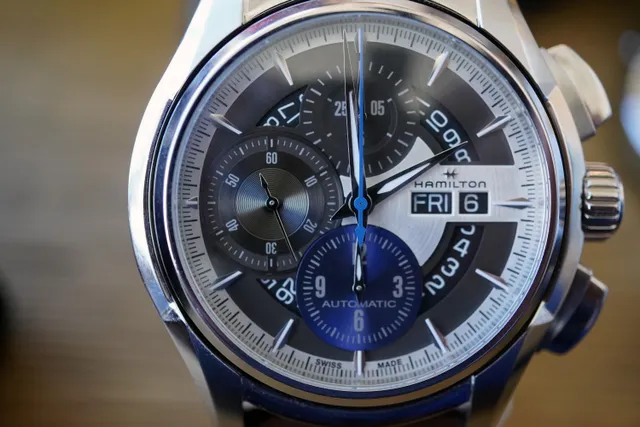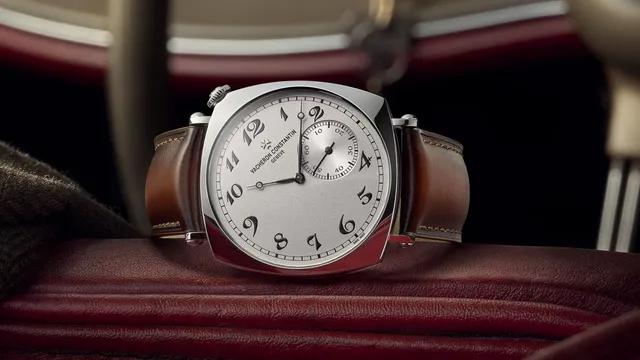A dirty dozen: the British WWII watches
Discover the Dirty Dozen WWW military watches of 1945, their makers, straps, service history, and collector tips in this complete guide.
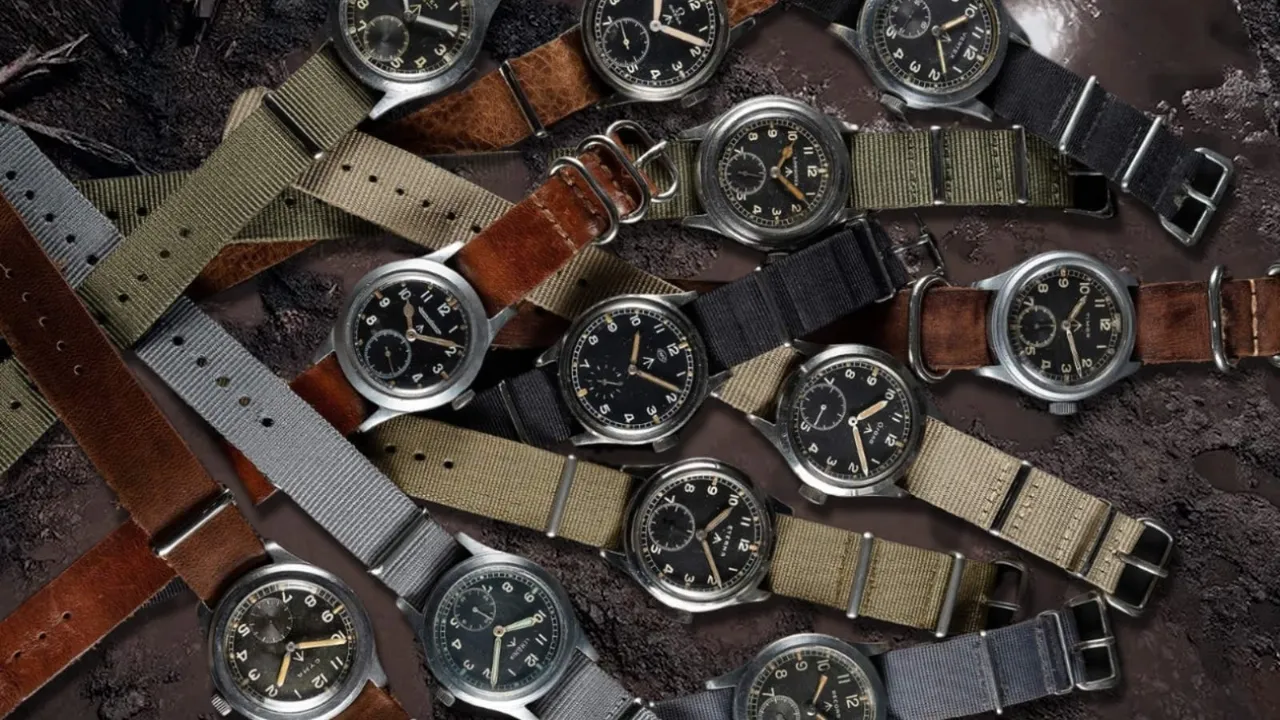
If you care about field-watch design, you eventually run into a stark little trio of letters: W.W.W. Long before that meant world wide web, it stood for "Watch, Wrist, Waterproof." The British Ministry of Defence drew up the WWW specification in 1944 as a late-war call for a legible, robust service watch. Twelve Swiss makers answered, and the community later nicknamed their output "the Dirty Dozen."
Despite the different logos on the dial, all twelve shared the same DNA: a black dial with Arabic numerals, luminous hands, small seconds at six, a shatter-resistant acrylic crystal, fixed bars, and a 15-jewel hand-wound movement sized between roughly 11.75 and 13 lignes (~35–38 mm). Casebacks carried the broad arrow, W.W.W., and a stores number. Deliveries clustered in 1945, just as the war was closing.
Key facts for collectors
These watches were produced and issued in the final phase of WWII, almost entirely in 1945. At arm's length they look uniform, but closer inspection reveals differences in case size, case metal, crown profile, and - most of all - movements and dial details. Many remained in service through the 1950s-70s. The Army's REME workshops swapped parts freely, re-lumed radium dials with safer compounds, and sometimes fitted brand-agnostic service dials marked with a circled "T." Authenticity, then, is not absolute; service history is part of what makes these watches compelling today.
Below is a brand-by-brand tour focused on the details that separate one brand from another. Dimensions are nominal; expect small variances across examples. I don't own any of these today but the reason I'm doing this research is because I'm planning to.
Buren
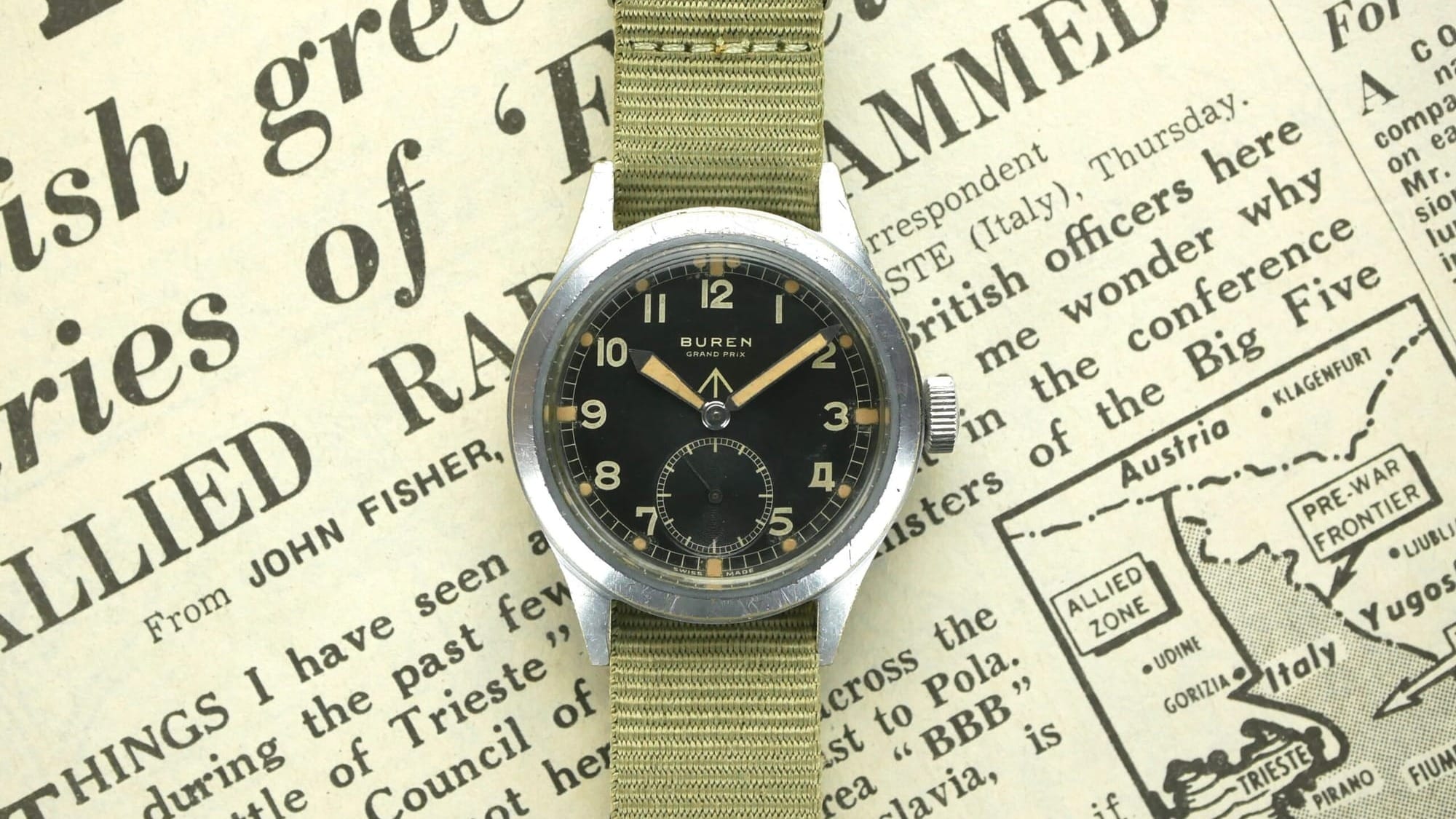
Buren may not be the first name that comes to mind when collectors talk about the Dirty Dozen, but their contribution to the Ministry of Defence's WWW specification holds its own among the twelve. Produced in the final year of the war, the Buren WWW carried all the design cues required by the contract: a no-nonsense black dial with luminous Arabic numerals, a crisp railroad minute track, and a sub-seconds register planted neatly at six o'clock. Depending on the batch, the watch left the factory with either sword hands or the simpler pencil style, both painted with radium to meet the lume requirement.
Under the hood beats the Buren caliber 462, a 15-jewel movement that gave the piece solid reliability. The case construction was workmanlike: chrome-plated brass for the body, with a stainless steel screw back to keep the movement secure. It was never a luxury object but a soldier's tool, and that stripped-down honesty is what makes it attractive today.
For many enthusiasts, Buren's WWW is not the flashiest of the group, but it is a charming and robust outlier that still feels purposeful on the wrist.
Cyma
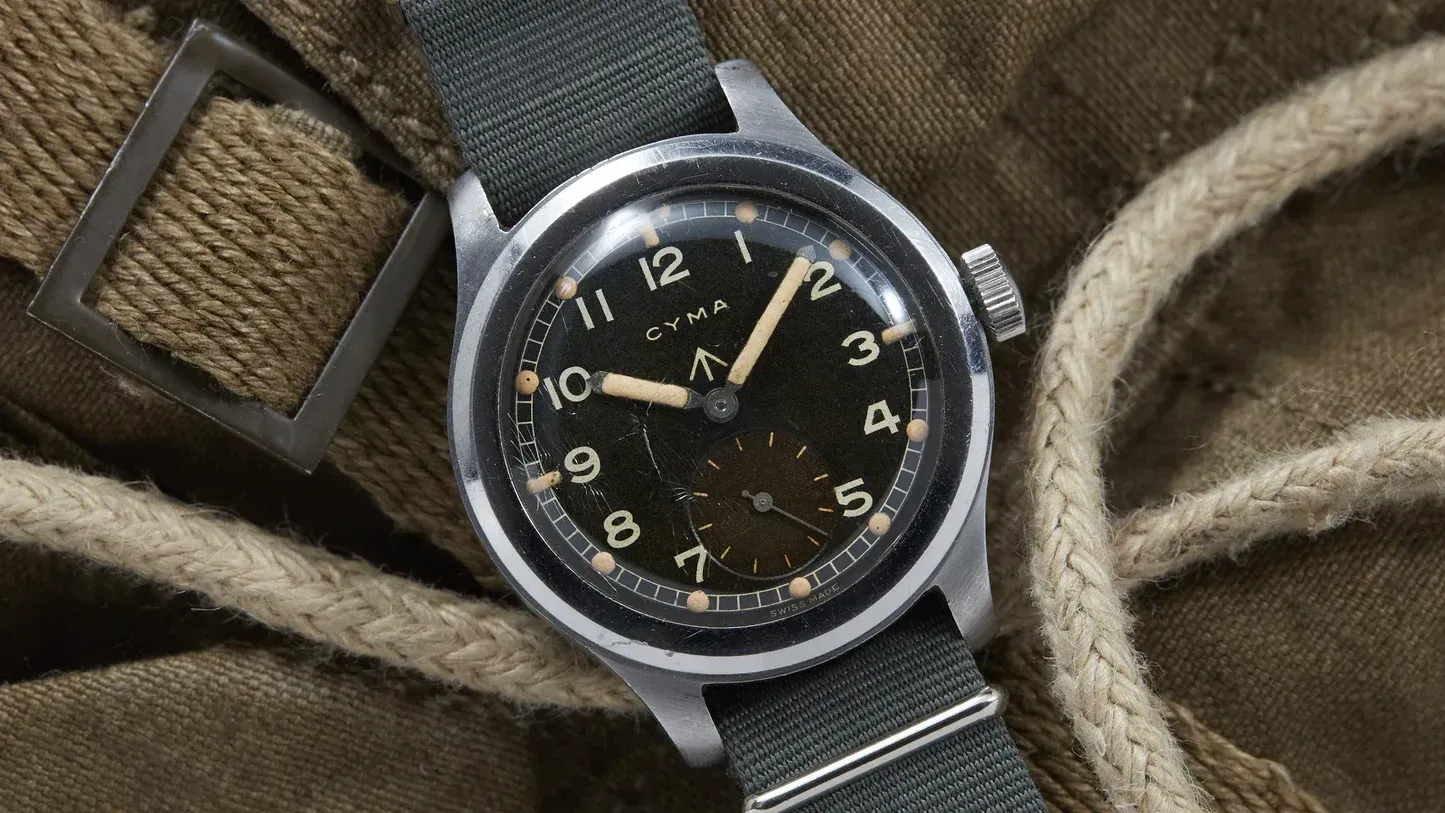
Cyma's contribution to the WWW specification stands out for its size and presence. With a stainless steel case measuring about 37 mm across and 18 mm lugs, it ranks among the largest of the Dirty Dozen. The generous proportions, paired with an oversized crown, give the watch a wrist feel that is both practical and quietly bold. Many examples were delivered with a soft-iron inner cover, a thoughtful touch that provided protection against magnetic fields.
Inside sat the Cyma caliber 234, a 15-jewel manual movement. It was simple and tough, though delivered without shock protection, which meant longevity depended on careful use. The dial was usually paired with long baton hands, lending the watch a clean, restrained look.
Collectors often point to the Cyma as one of the most wearable of the group, combining size, toughness, and classic military styling in a way that still resonates today.
Eterna
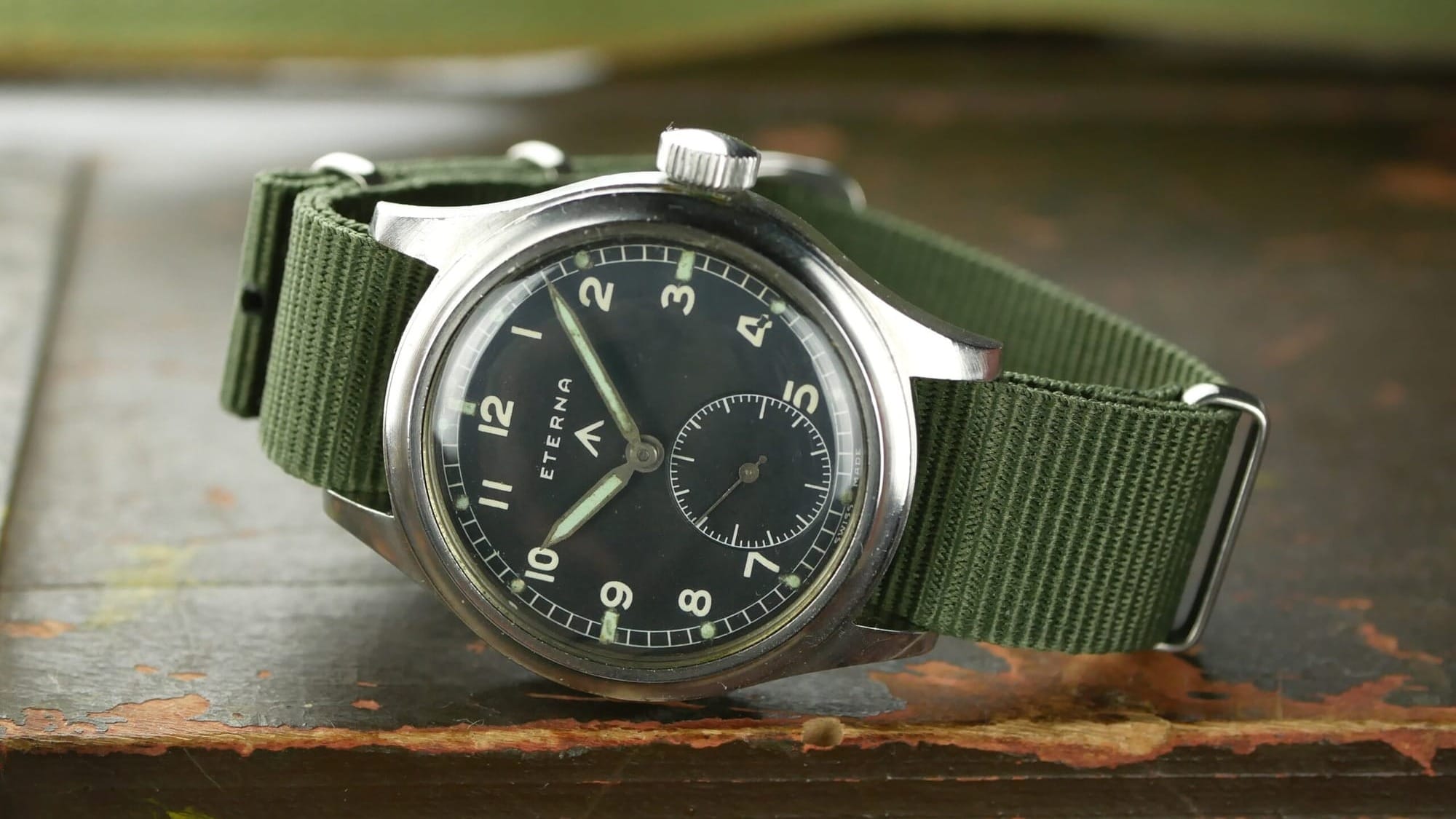
Eterna's take on the WWW shows the brand's knack for thoughtful engineering. The stainless steel case measures about 35 to 36 mm with 18 mm lugs and a bezel that is either smooth or slightly concave, catching the light with subtle elegance.
Inside is the in-house caliber 520H, a 15-jewel movement that often came equipped with Eterna's own shock protection system. Watchmakers have long admired this caliber for its tidy architecture, and many note that parts support remained unusually good compared to peers.
The dials were typically paired with pencil-style hands, keeping the design calm and highly legible. Among the Dirty Dozen, Eterna's WWW is often described as the most watchmaker-friendly of the set, a tool that was practical in 1945 and remains easy to live with today.
Grana
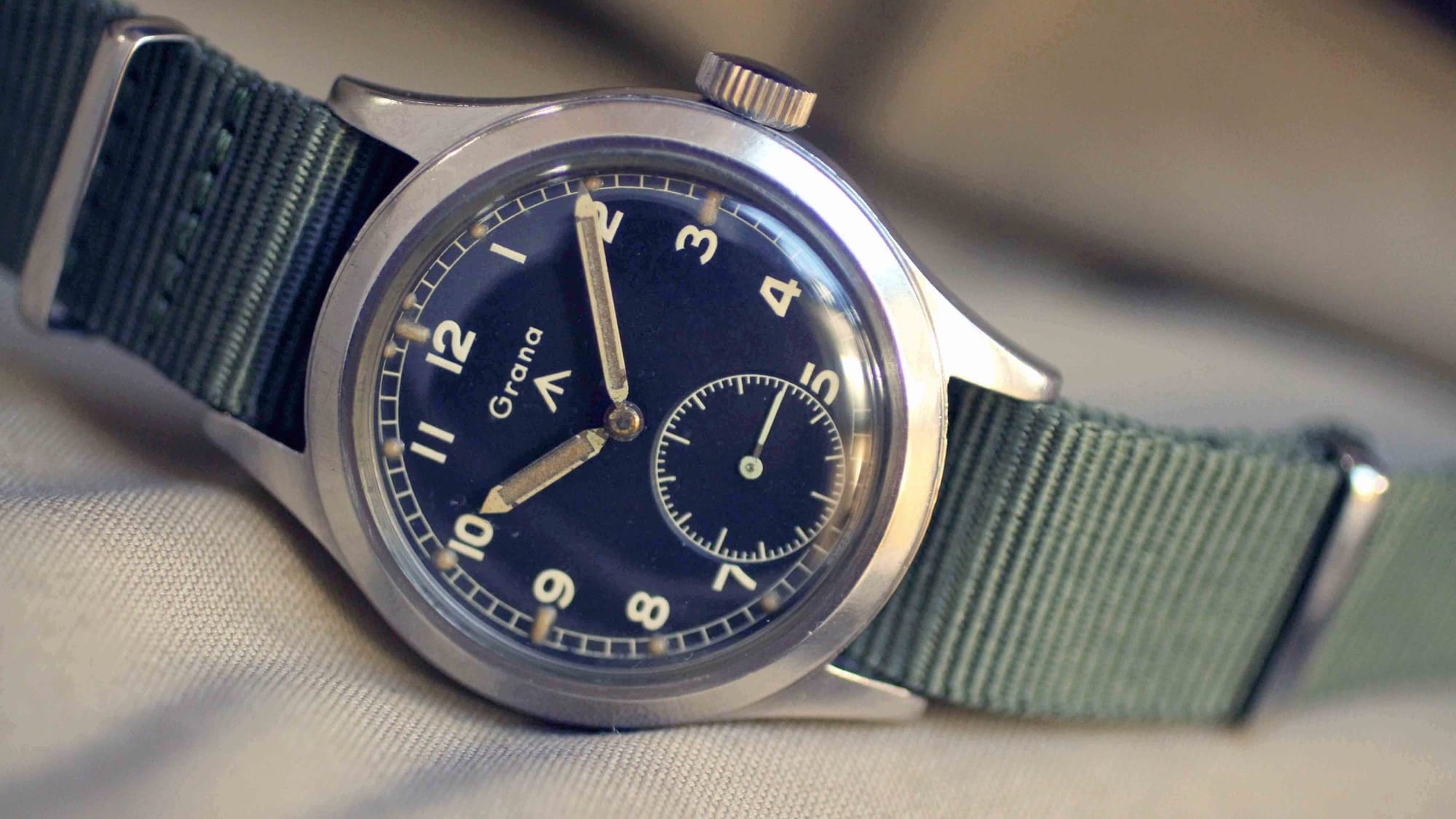
Grana is the grail of the Dirty Dozen, prized for both scarcity and quality. The stainless steel case measured about 35 to 36 mm and was built with fixed bars and squared, confident lugs.
Powering the watch was the Kurth Frères caliber KF 320, a 15-jewel movement known for solid performance when properly serviced. Yet the defining feature of the Grana is not its specs but its production volume. Unlike Omega or Longines, which delivered tens of thousands of units, Grana’s output is believed to have been in the very low thousands. That scarcity has cemented its place at the top of many collectors’ lists.
A sharp, unpolished case with crisp caseback engravings and an original handset with intact lume can elevate the Grana from desirable to exceptional. For many, it remains the ultimate prize in assembling a complete set of the Dozen.
Some exciting new for WWW fans, Grana is back up and running and planning to open up this year (2025) to re-release this watch. The website says that the new watch will feature a 39mm case with several dial variations. You can find out more at granawatchco.com.
IWC
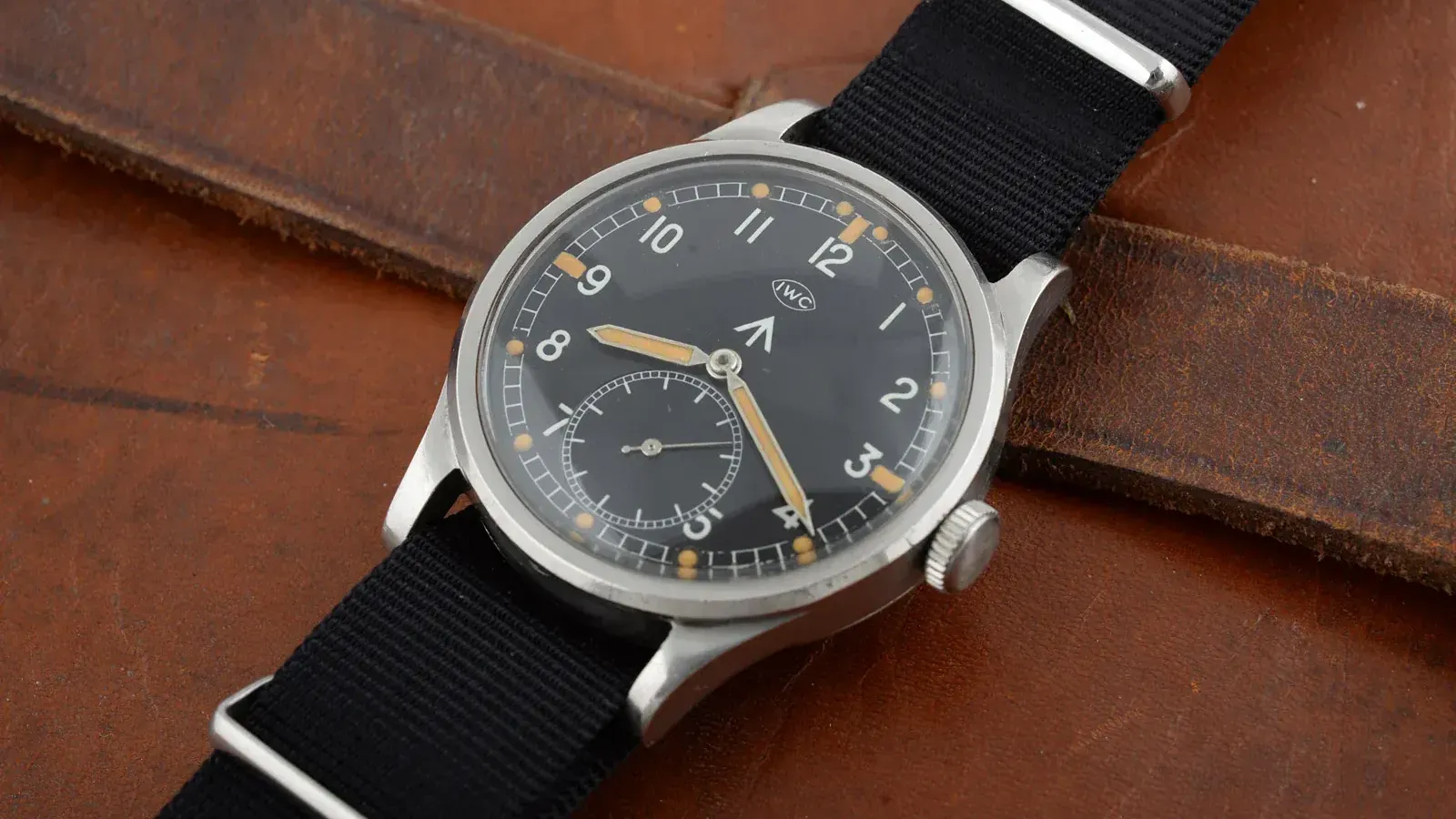
IWC’s so-called “Mark X” is the structural outlier of the Dirty Dozen. The stainless steel case measures about 35 mm with 18 mm lugs, but instead of the screw-back design seen on most of its peers, IWC chose a flatter case with a snap-on back. The brand also skipped the flanged crystal and rear tension ring system used by others, opting for a more conventional crystal arrangement. These differences gave the watch a unique place in the set, less overbuilt yet still robust in daily use.
Inside is IWC’s caliber 83, a beautifully laid-out 12-ligne movement that had already built a reputation for accuracy and longevity in civilian models before the war. Collectors still admire its balance of engineering clarity and reliability, and many consider it one of the finest movements in the entire group.
On the wrist, the IWC WWW looks restrained, with calm Arabic numerals, railroad minutes, and a small seconds at six. For enthusiasts, it offers both the functional simplicity expected of the contract and the quiet refinement that marked IWC’s pre-war watchmaking.
Jaeger‑LeCoultre
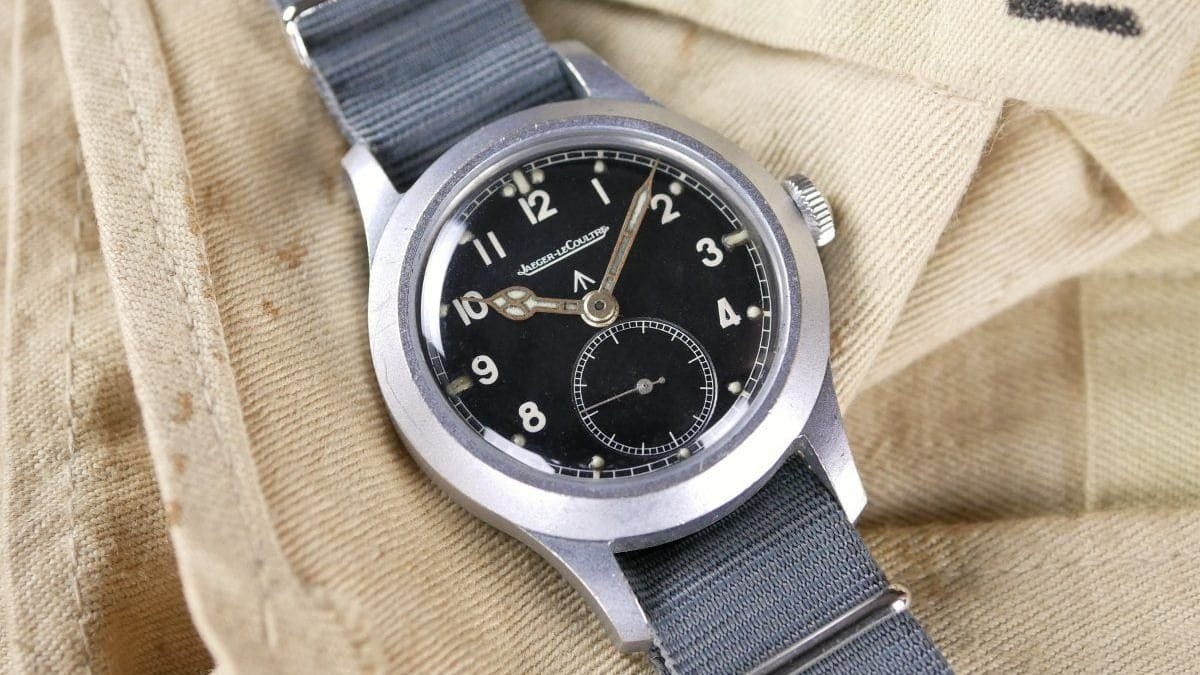
Jaeger-LeCoultre’s entry in the Dirty Dozen has always felt slightly more lyrical without losing the military brief. The case is about 35 mm across and typically built with a chrome-plated bezel and a steel back. Lug spacing is around 17 mm, which means modern 18 mm straps will fit, though often with a snug bite at the edges.
Inside beats the in-house caliber 479, a gilt-finished movement that shows off the brand’s reputation for overbuilt architecture. For collectors who enjoy movement design, it is one of the more satisfying calibers in the entire set.
Many examples came fitted with cathedral hands, a detail that instantly shifts the look compared with the sword-handed peers, while the dials themselves sometimes display a glossier print style. Because these watches saw long service lives, some carry Ministry of Defence replacement dials. These are perfectly correct if disclosed, but the most prized pieces retain their original radium plots and period handsets.
Lemania
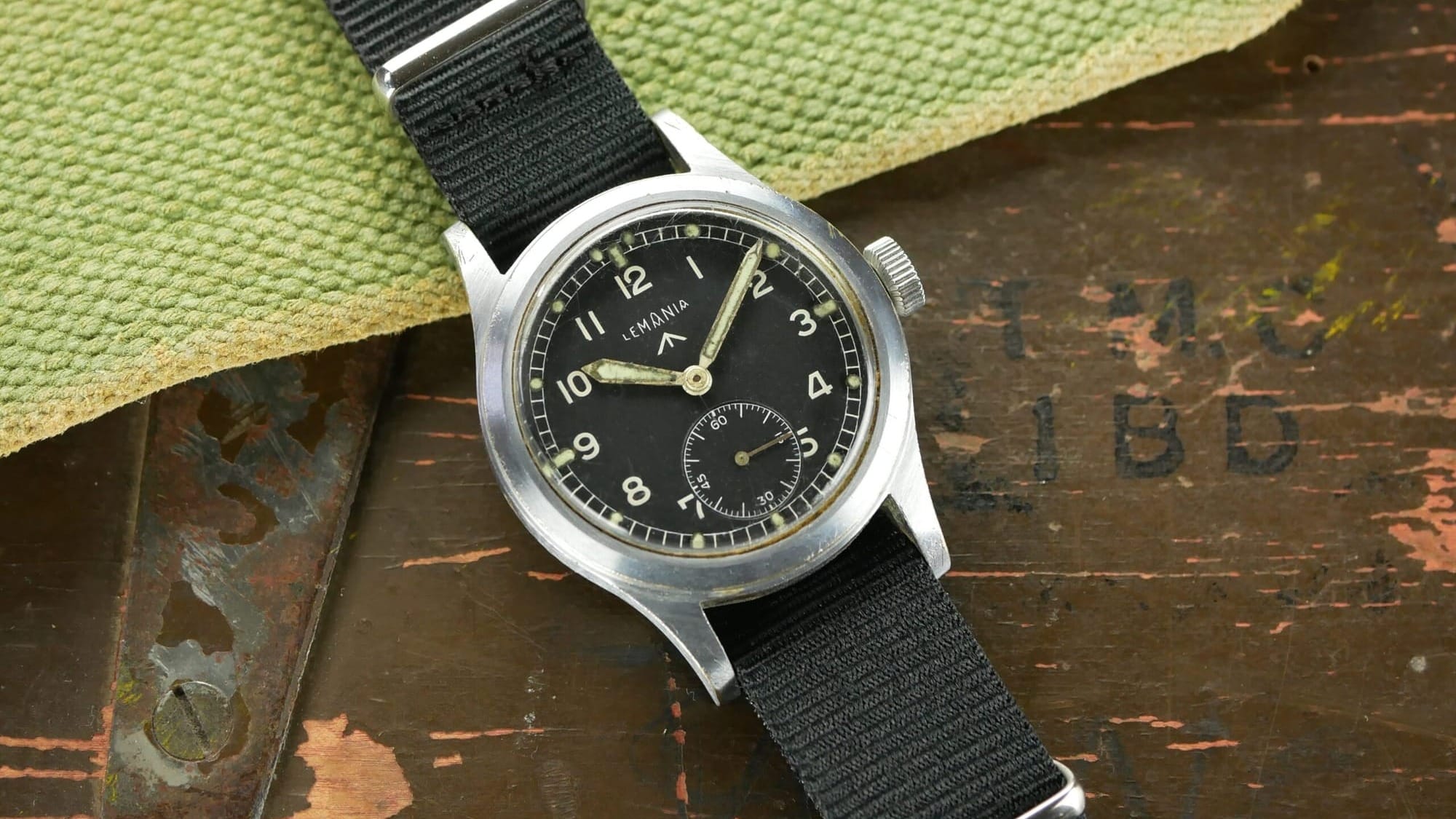
For collectors who appreciate movement makers, Lemania is a sweet spot in the Dirty Dozen. The chrome-plated brass case measures about 36.5 mm, a touch larger than many peers, with longish lugs that give it extra stance on the wrist. Fixed bars were standard, and the steel screw back kept the movement secure.
That movement was the manual-wind caliber 27A, a simple and durable 15-jewel engine that also appeared across Lemania’s broader family of watches in the 1940s. It is not elaborate, but it is respected for doing its job reliably.
Dial variations are more pronounced here than in some other makes: certain examples show a crown logo, others a cleaner sub-seconds register. Hands range from pencil to sword, details that become important when assessing originality.
As with other plated cases of the era, brassing often appears on sharp edges, and surviving examples with even wear and intact fixed bars are especially attractive. In terms of rarity, Lemania occupies a comfortable middle ground: not as common as Omega, not as elusive as Grana, but satisfying for those who want a balance of quality and collectability.
Longines
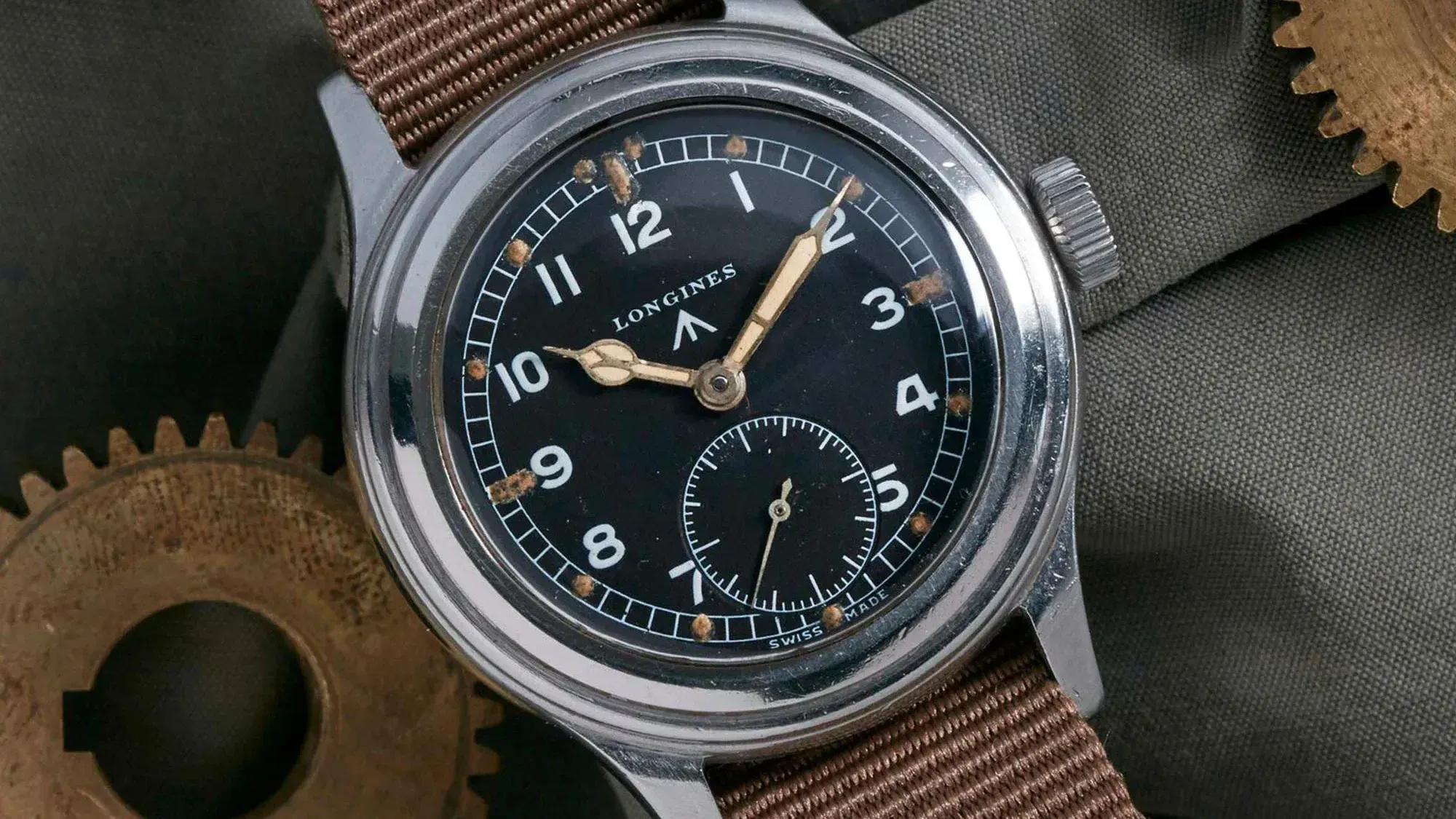
Longines is often called the connoisseur's choice among the Dirty Dozen, admired for proportion and presence. The stepped stainless steel case, usually referenced as 23088, measures around 37.5 to 38 mm and feels every bit of its size on the wrist. Cathedral hands and a broad minute track make the dial read large and supremely legible, hallmarks of Longines' design sensibility in the 1940s.
Inside beats the caliber 12.68Z, part of Longines' celebrated 12.68 family. For a military contract watch, the movement stands out for its smooth running and finishing quality, a reminder of why Longines held such esteem in mid-century watchmaking.
Collectors still use the nickname "Greenlander," though the supposed expedition link has no period documentation to back it up. It is best treated as a popular moniker, not as provenance. A top-tier example will show a sharp stepped case, an untouched dial, and a correctly signed 12.68 movement, making the Longines WWW one of the most satisfying watches of the entire set.
Omega
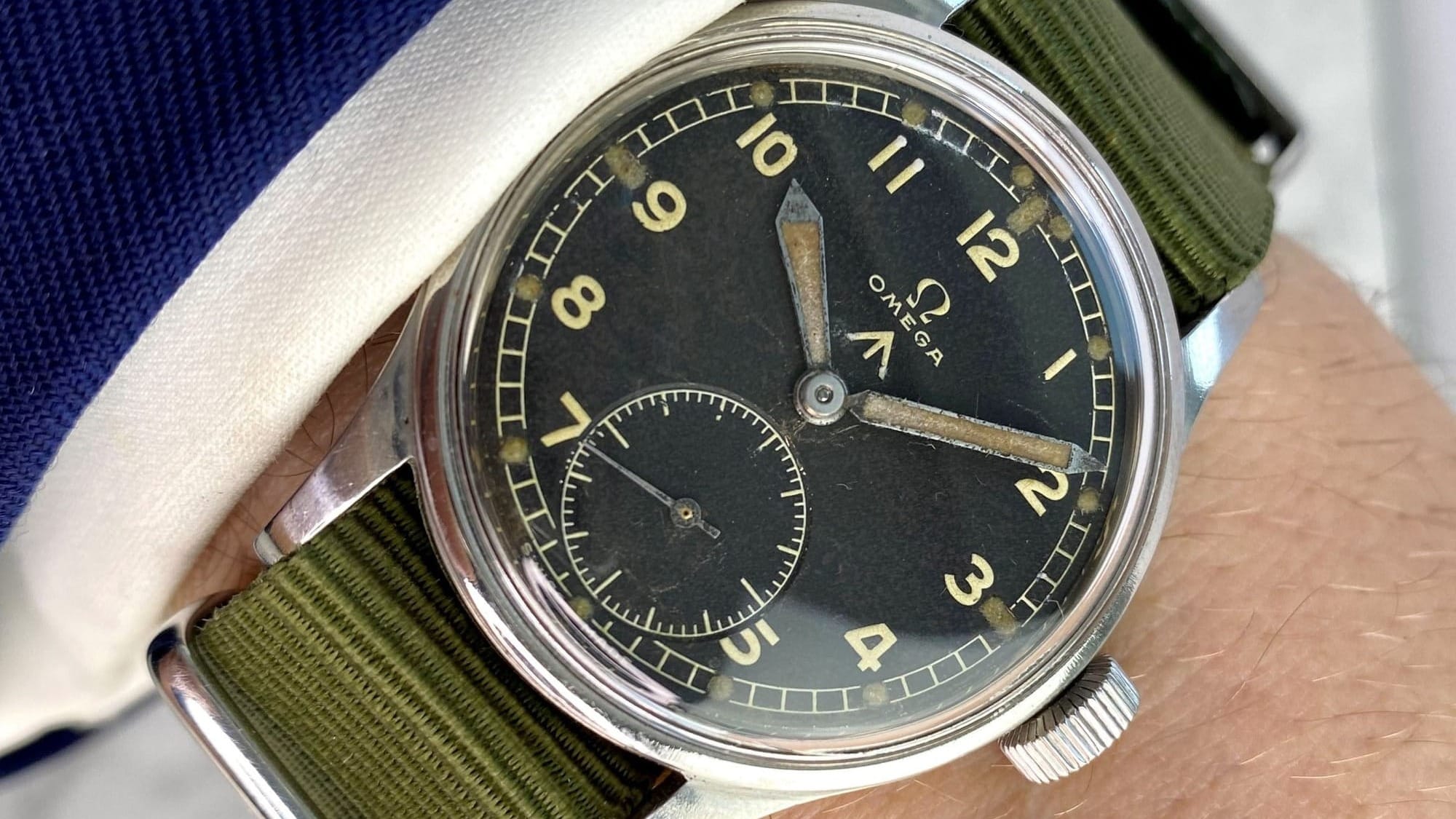
Omega’s contribution to the Dirty Dozen was made in such large numbers that many collectors begin their journey here. The stainless steel case measures about 35 mm with 18 mm lugs, a straightforward design with a flat, no-drama profile that wears comfortably on the wrist.
The engine inside is the small-seconds variant of Omega’s famous 30T2, a 30 mm caliber that became the foundation of the brand’s mid-century reputation for reliability. The dial sticks exactly to the military brief: bold Arabic numerals, a clean seconds register at six, and sword hands filled with lume.
Because Omega produced more of these than any other maker, there is still a healthy ecosystem of donor movements and spares, which helps keep examples running. For collectors, the difference between a good watch and a great one often comes down to dial originality and the sharpness of the caseback engravings.
Record
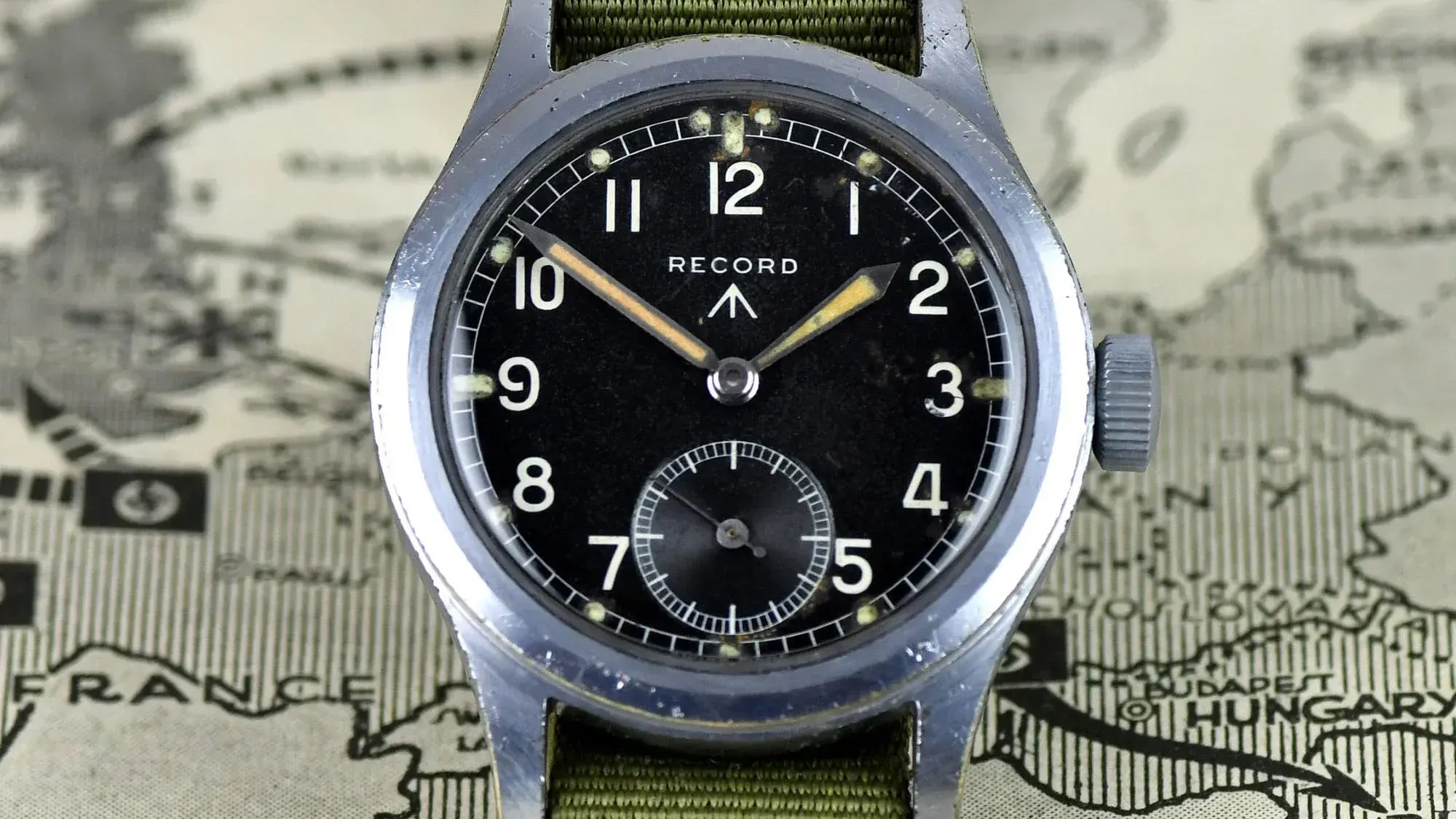
Record’s entry in the Dirty Dozen is a textbook example of the Ministry of Defence brief. The case measures about 36.5 mm, built with a chrome-plated brass body and a steel screw back, giving it both size and solidity.
Inside ticks Record’s own caliber 022K, a 15-jewel movement designed and produced in-house. On the dial, a fully graduated sub-seconds track is a recurring feature, and it gives the watch a crisp, orderly look in person.
Record produced a relatively large number of WWWs, which makes them one of the more accessible ways into the set. The trade-off is the plated case, which often shows brassing at the lug tips and bezel edges. Even wear tends to look honest, while uneven patches or re-plating can detract. For collectors who value practicality, Record’s WWW offers strong history without an intimidating price of entry.
Timor
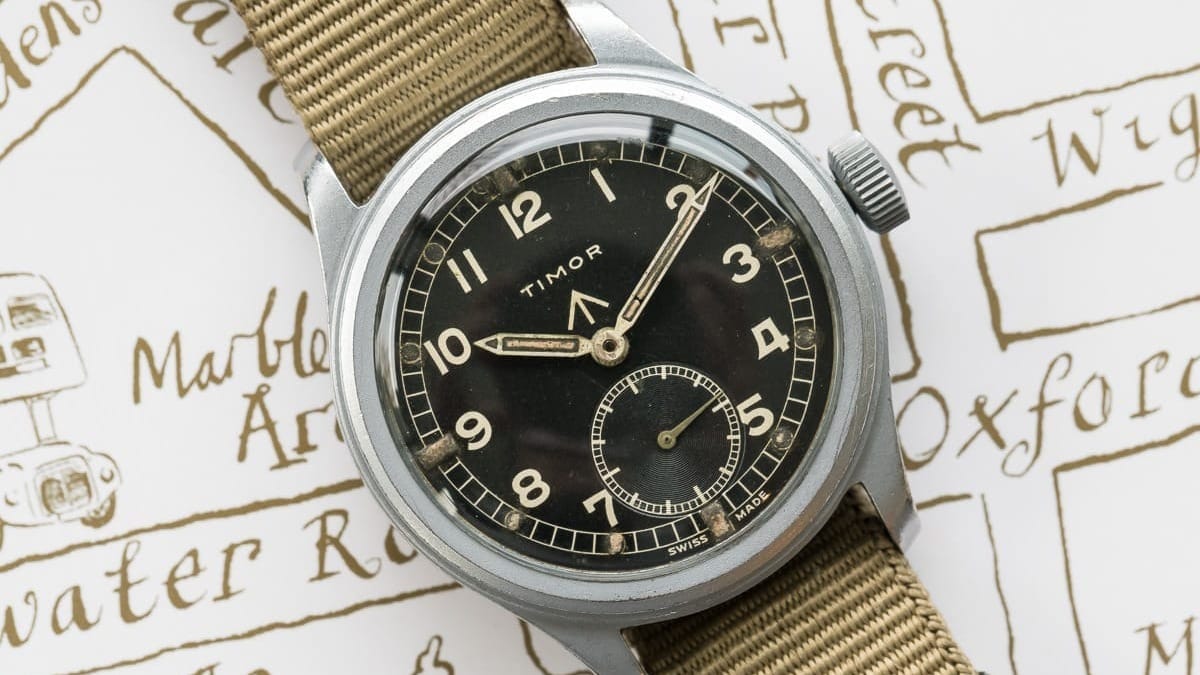
Timor’s WWW hits the middle of the bell curve in the best way. The case measures about 36.5 mm, with a stepped mid-case that plays nicely with the light and proportions that feel instantly familiar on the wrist. The dial is blunt and functional, the sort of clarity you want from a military instrument.
Under the back sits the Timor caliber 6060, based on the A. Schild 1203 and adapted to the MoD specification. Production is usually quoted in the low tens of thousands, which means Timors surface regularly and can be found without the hunt that plagues rarer names in the set.
Most originals feature pencil hands with pointed, lume-filled tips, though service dials and replacement handsets are known. For collectors who want an authentic WWW feel with dimensions that translate directly to modern daily wear, Timor belongs on the shortlist.
Vertex
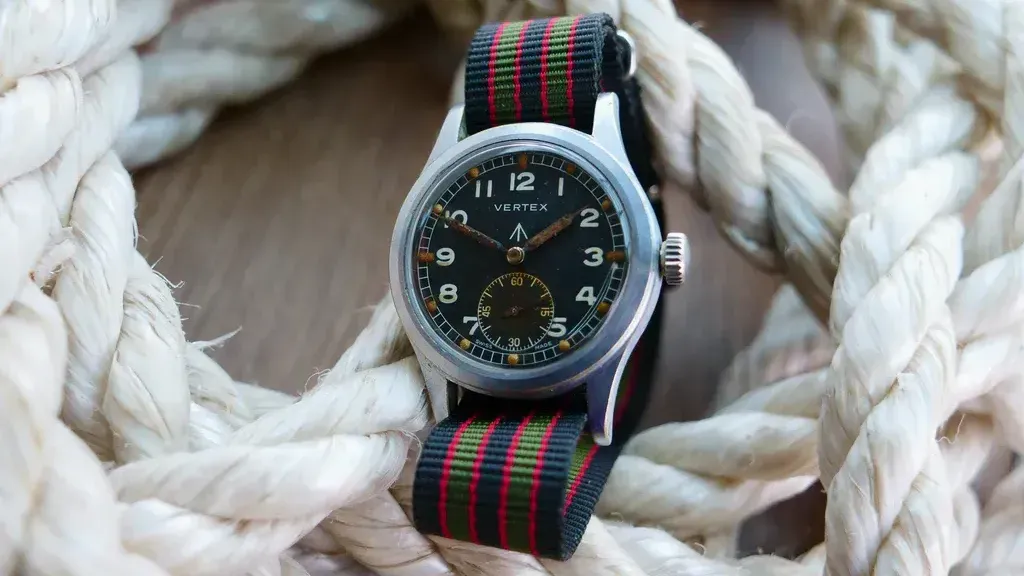
Vertex, the London-based firm founded by Claude Lyons with strong Swiss manufacturing ties, delivered one of the most straightforward watches in the Dirty Dozen. The stainless steel case measured about 35 mm across with 18 mm lugs, perfectly proportioned for military duty without excess.
At its heart was the Revue/Vertex caliber 59, a 15-jewel movement shared with Revue that proved robust, reliable, and easy to maintain. Even today, spares are often sourced through Revue-Thommen channels, keeping these watches serviceable for modern collectors.
The dials tend to be neat and balanced, most often paired with pencil hands and a cleanly printed sub-seconds at six. Later service dials issued by the MoD are not uncommon, but the originals carry a fully graduated seconds register and classic numeral shapes that collectors prize.
Modern Vertex has reissued the design almost note for note, a testament to how well the original proportions still sing nearly eighty years later.What unites the cases, and the one major outlier
Most of these watches cases use a screw back and a flanged acrylic crystal that is retained by a ring tightened from the rear. It makes for a tough, easily serviced seal. IWC is the exception, with a snap‑on back and a conventional crystal. If you handle several in a row, that difference becomes obvious. It is also a simple authenticity check: an IWC with a screw back is cause for skepticism.
Straps and service parts
The British Army introduced the A.F.0210 strap in 1945, officially catalogued as A6/AF0210: STRAP, WRIST, INSTRUMENT. It was a single-pass canvas webbing strap used on compasses and the new WWW service watches, and it stayed in service well into the Cold War.
The Royal Air Force, by contrast, issued the 6B/169 strap with its pilot watches. These were two-piece pigskin straps with open ends that clipped to the fixed bars, usually 16 mm wide though 18 mm versions also appeared. They were standard issue during and after the war.
What this means for collectors is straightforward. If you want period correctness, pigskin 6B/169 straps or canvas AF0210s are the right choices, though originals are scarce and fragile. If you want practicality, a modern two-piece canvas strap captures the spirit while being easier on plated cases than constant NATO threading. The gray nylon G10 NATO strap, though iconic, did not arrive until 1973. It is comfortable and tough, but strictly speaking an anachronism on a 1940s watch. To learn a lot more check out af0210strap.com.
Post‑war travels that add provenance
When the war ended, Britain was left with a surplus of WWW watches. Many of these timepieces were redistributed or sold to allied militaries. Some of the most fascinating journeys show up on the casebacks. In the Dutch East Indies, examples were engraved K.N.I.L. for the Koninklijk Nederlands Indisch Leger. As the political situation changed, some of those very watches had their KNIL engravings struck through and replaced with A.D.R.I. for the Army of the Republic of Indonesia.
For collectors, these multi-line engravings - British broad arrow plus WWW, then KNIL, later overwritten by ADRI - stand as physical fingerprints of post-war history. When authentic, they add a layered provenance that deepens the story without changing how the watch wears.
Collecting myths and misunderstandings
Three recurring points are worth clearing up. First, the "Greenlander" nickname for the Longines W.W.W. persists, but the famous expedition connection does not hold up; treat the name as collector shorthand. Second, W.W.W. watches were not delivered before 1944; the spec and procurement happened during the war, but deliveries clustered in 1945. Third, NATO straps did not exist in WWII; they are practical, not period. These clarifications do not diminish the watches, but they help keep the record straight.
Practical buying tips
Start with the dial and hands, because originality here is where value shows. Many WWWs received Ministry of Defence redials and relumes in the 1960s and 1970s, when radium was phased out in favor of safer luminous paint. These service dials can make excellent daily wearers, but untouched radium plots and original handsets remain the collector's premium. Scrutinize fonts, sub-seconds scales, and hand profiles against reliable references - the AF.0210 strap archive, A Collected Man's military watch essays, and Hodinkee's long-form histories illustrate period-correct variations.
Case metal comes next. Stainless steel cases - Cyma, Longines, Omega, and Grana - tend to wear their age gracefully. Chrome-topped brass cases - Buren, Record, Lemania, many Timor, and Vertex - often show brassing at lug tips and bezel edges. Honest, even wear is expected; heavy brassing, sloppy re-plating, or repaired fixed bars are warning signs or at least points to negotiate. Eterna adds its own quirk: the WWW used a flanged acrylic crystal held in place by a retaining ring tightened under the screw back. Finding the right crystal and gasket profile is important for a snug, dust-tight fit after service.
Movements are the final check. The Omega 30T2, IWC cal. 83, JLC cal. 479, Grana KF 320, and Eterna cal. 520H are all robust when properly serviced, but each has its tells. On the Eterna 520H, neglected examples can show wear at the barrel-arbor bearings, sometimes requiring a bushing. On the Cyma 234, the absence of shock protection makes the balance staff a vulnerable point; a skilled watchmaker will catch replaced staffs or rough pivots quickly. None of this should deter you - it is simply the normal due diligence that comes with mid-century military watches.
Final thoughts
The Dirty Dozen are standardized tools made by very different hands, and that tension is the point. The stepped Longines shows how proportion can elevate utility. The Cyma feels every inch a piece of equipment. The IWC rewards a loupe with engineering clarity. The JLC adds romance without straying from the brief. Around them, the rest map a spectrum of size, case metal, and movement character that still defines the field-watch category. These watches were built to work. That is why they still work so well today.
Sources and further reading
- The Dirty Dozen: A Guide to the Twelve Military Watches of WWII – A Collected Man
- Dirty Dozen Brand Guides – The Spring Bar
- History of the A.F.0210 Strap – AF0210 Strap
- The Leather 6B/169 Strap – AF0210 Strap
- The Dirty Dozen: 12 Legends of WWII – Praesidus
- Dirty Dozen and KNIL/ADRI Casebacks – Vintage Watch Life
- Military Watches of the World: The Dirty Dozen – Worn & Wound
- The Original NATO (AF.0210) – Zuludiver


